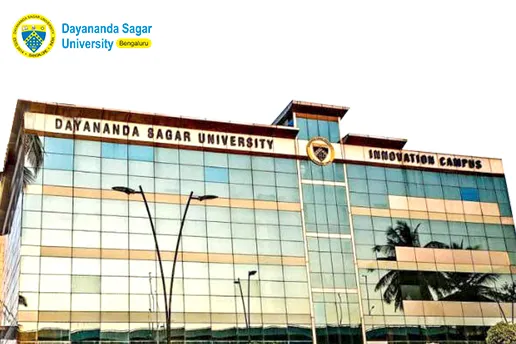Experience Letter: Format, Certificate, Sample and Tips
Table of Contents

What is an experience letter? An example will make it clear. Switching jobs is an age-old scenario. How will an employer know whether a job applicant has the relevant experience? Only words will not work. One has to show some proof. An experience letter is evidence of an individual’s working experience. It is essential for both employees and employers. In this document, everything about a person’s employment history is mentioned. So, from this letter, an employer can verify the aspiring candidate’s past roles, responsibilities, and the durations of employment.
Therefore, understanding the importance of this letter is important. Since this is a formal document, there is a particular format to be followed while writing it. So, the following blog will not only provide a sample of a formal experience letter, but also discuss some essential points regarding this professional document.

*freepik.com
What Makes an Experience Letter So Important?
Now, before moving on to the format and the sample of an experience letter, it is vital to know why it is so important –
For Employers:
- It is a document containing a person’s work-related information. An employer can gauge whether the candidate is suitable for the role just by going through it.
- By going through this document, employers learn the candidate’s background instantly, making the hiring process smooth.
- The letter highlights the candidate’s specific skills and experiences. It helps employers determine whether the person is a good fit for the open position.
- If the letter from the previous employer is well written, it becomes easy for the current employer to hire the right person.
For Employees:
- It is a formal declaration of an employee’s skills and sense of responsibility from a previous employer. So, this is concrete proof of what the employee is capable of.
- This letter helps the employees show their track records and prove their worth to potential employers, which largely helps them get a placement.
- This letter details an employee’s conduct and performance, which can help employees convince future employers of their suitability for the role.
- An experience letter clearly shows an employee’s potential. This paves the path for an employee to negotiate their salary with future employers.
- The letter is a valuable record of an employee’s career history. It allows them to refer back to past roles and achievements whenever they need to.
- This letter helps to develop a professional but good relationship between the former employer and the employees.
What Must Be There in an Experience Letter?
Here are the essential components of a well-written experience letter –
- Details of the Employee: The employee’s details, like their name, designation, etc., must be included in the letter. This will prevent future employers from being misled.
- Heading/Letterhead: The issuing company’s authorized letterhead must be used while writing the letter. It should contain the company’s details, such as name, address, contact numbers, etc. This will help if some cross-verification is needed in the future.
- Issuing Date: The date of issuing the letter must be clearly mentioned. It will help other employers gauge when exactly the employee has gained the stated experience.
- Achievements of the Employee: The issuing company must state every responsibility that the employee dealt with while working with them. Also, they should not forget to mention the employee’s achievements and significant contributions to the company as well.
- Why the Employee Decided to Leave: Although it is not mandatory, the issuing company may choose to include the reason for the employee’s departure from the job.
- Start and End Dates: The issuing company must mention the dates when the employee joined and when they left. This information helps a future employer determine the employee’s previous service period if needed.
- Best Wishes with Good Remarks: At the end, the issuing company must wish well for the employee officially. However, there must not be any informal statements, and it should sound professional. It gives warmth to the letter.
- Details of the Issuing Authority: The letter must be authentic, so an authorized person must sign it. The signatory’s details, like name, designation, contact information, etc., should also be clearly mentioned with an official stamp. This gives weight to the letter and also helps future employers verify if needed.
How Must an Experience Letter Sound?
Though an experience letter is a formal document, it should sound respectful, easy to understand, and genuine. Some points to remember while writing it are –
- Formal and Professional Tone: This letter is a formal document that creates an impression about the company. So, maintaining a professional tone is essential. The letter must also not sound biased. There must not be any slang, casual phrasing, jargon, or complex sentences. Clear language and an honest, respectful tone will create a positive image of the company. Also, the employee’s professional image will be uplifted, helping them to get future opportunities.
- Logical Flow and Structure: Whoever is reading the letter must be able to understand it well. Only avoiding jargon will not do. A logical flow of information is needed to make the letter clearer and more understandable. Additionally, the structure is equally important, and a standard format is to be followed, like beginning with the employee’s name, designation, and period of employment. After this, the key responsibilities and significant achievements are to be mentioned sequentially. It allows the reader to easily comprehend the contributions of the employee. Such an organized approach enhances the readability of the letter, and the hiring employers will not get confused. Only a clear structure can logically present all essential details. The reader will have a positive impression instantly. Individuals can use a similar strategy while drafting a cover letter.
- Using the Format of a Business Letter: It is wise to take the help of the format of a business letter. “To whom it may concern” can be used in place of the recipient. The rest of the structure is standardized. It ensures the letter is organized and informative.
- Digital or Physical Copies: Both digital and physical copies are important. A physical copy, printed on company letterhead with signatures and seals, carries a sense of authenticity. It is helpful in case of in-person submissions or when explicitly requested by an organization. However, digital copies are advantageous in today’s world. They can be easily shared via email and are less prone to loss or damage. Many organizations now readily accept digital copies, and PDF is the format of choice.
Experience Certificate Vs. Experience Letter
The letter for the experience certificate is not the same as the employee experience letter. But how?
Experience Certificate:
- What it is: A simple proof that one worked somewhere.
- What it says: One’s name, job title, and how long the person worked there.
- Details: Usually doesn’t have much detail about what one did or how well the person did it.
- When to use:
- Basic proof of employment (like for a loan).
- Visa applications (sometimes, for just showing one had a job).
- Early stages of some job applications.
Experience Letter:
- What it is: A more detailed description of one’s work.
- What it says: One’s name, job title, tenure of work, what work the person did, what skills the person used, and the achievements.
- Details: Gives a better picture of one’s abilities and contributions.
- When to use:
- Applying for new jobs shows what one can do.
- Applying for higher studies.
- Visa applications (when they need to know one’s work experience in detail).
A Sample Experience Letter Format
For example, a person named Anil Kumar was working with a food manufacturing company. The company’s name was Mixture (imaginary). Anil Kumar has recently discontinued his service. His date of joining was May 8, 2020, and his last date of working was April 10, 2025. He requested an experience letter. The company issued the same on April 30, 2025. Anil Kumar worked as a Production Manager during this period. He had achieved the target of hitting 100% bulk production (project name – Street Children Fooding) on short notice of 10 days in July 2024. For this, he was rewarded Rs. 80,000 as a bonus. Throughout his tenure, he has been an honest, dedicated, and efficient employee.
Following is a sample letter based on the above information.
[Mixture Letterhead (Logo, Name, Address, Contact Details)]
Date: April 30, 2025
To Whom It May Concern,
This is to certify that Mr. Anil Kumar was employed with Mixture as a Production Manager in the Food Processing department. His tenure with our organization was from May 08, 2020 to April 10, 2025.
During his employment, Mr. Anil Kumar was responsible for developing production schedules, ensuring quality control, and monitoring production processes to resolve issues. He consistently demonstrated a strong work ethic, dedication, and effective problem-solving skills.
During his tenure, Mr. Anil Kumar successfully led the implementation of the Street Children Fooding initiative, resulting in 100% bulk production within 10 days.
Mr. Anil Kumar resigned from his position to pursue other career opportunities.
We found Mr. Anil Kumar to be a valuable asset to our team. He is a diligent and hardworking individual. We wish him all the best in his future endeavors.
Sincerely,
(Signature)
[Name of Authorized Signatory]
[Designation]
Mixture
(Company Seal/Stamp)

*freepik.com
Some Suggestions on How an Employee Must Request an Experience Letter
Here are some suggestions on how an employee can request an experience letter from his/her respective employer –
- Request Promptly Upon Leaving: Don’t delay the request.
- Follow the Proper Channel: You must direct the request to the right person, such as a reporting manager or an HR representative.
- Be Polite and Professional: Maintain a decent and polite tone while placing the request.
- Provide Necessary Information: Ensure HR has the correct details.
- Mention the Intended Use: Clearly state that the letter is for future employment opportunities.
- Follow the Company Policy: Be informed of any standard procedure for requesting experience letters within the company.
- Be Helpful: The company may ask for some documents or information. Do not delay. Provide them with those as soon as possible.
- Do Not Hurry: These requests generally take time to be processed. So, do not become anxious. Keep patient.
- Keep a Copy for Your Records.
Experience Letter – General Mistakes and Methods to Avoid Them
Writing a clear and perfect letter is necessary to make a lasting impression on the hiring managers in the interview. But people are prone to mistakes. It should not happen. So, some common errors are discussed here with tips on how to avoid them.
- Typos and Grammatical Errors: One must proofread the letter carefully.
- Unclear Language: The writing should be in a professional but lucid language.
- Negative or Biased Remarks: Being neutral is essential.
- Missing Important Information: Again, thorough proofreading is needed to ensure all necessary information is included.
- Unapproved Signatories: Only an authorized person may sign the letter.
Conclusion
It must be clear by now that an experience letter is of the utmost importance, both for an employee and an employer. Employees need a well-crafted one to impress potential future employers, while former employers must issue a clear and informative one to retain their impression. It helps to maintain a healthy and good professional relationship between the employee and the former employer.
While having the right experience letter is important, one also needs to upskill on time. For that, individuals can look at amazing courses like the Online MBA Programme from Manipal University Jaipur.
Frequently Asked Questions
Why is an experience letter so essential?
It serves as proof of an individual’s work history and experience. Potential employers often require these to check the candidate’s background and suitability for a particular role.
How long does it take to issue an experience letter?
The time depends on the company. However, it is generally issued within one to two weeks after the last service date.
What should you do if there are mistakes in the experience letter?
The person who issued it, be it the HR or the reporting manager, must be contacted. The mistakes must be pointed out politely with a request for correction.


















